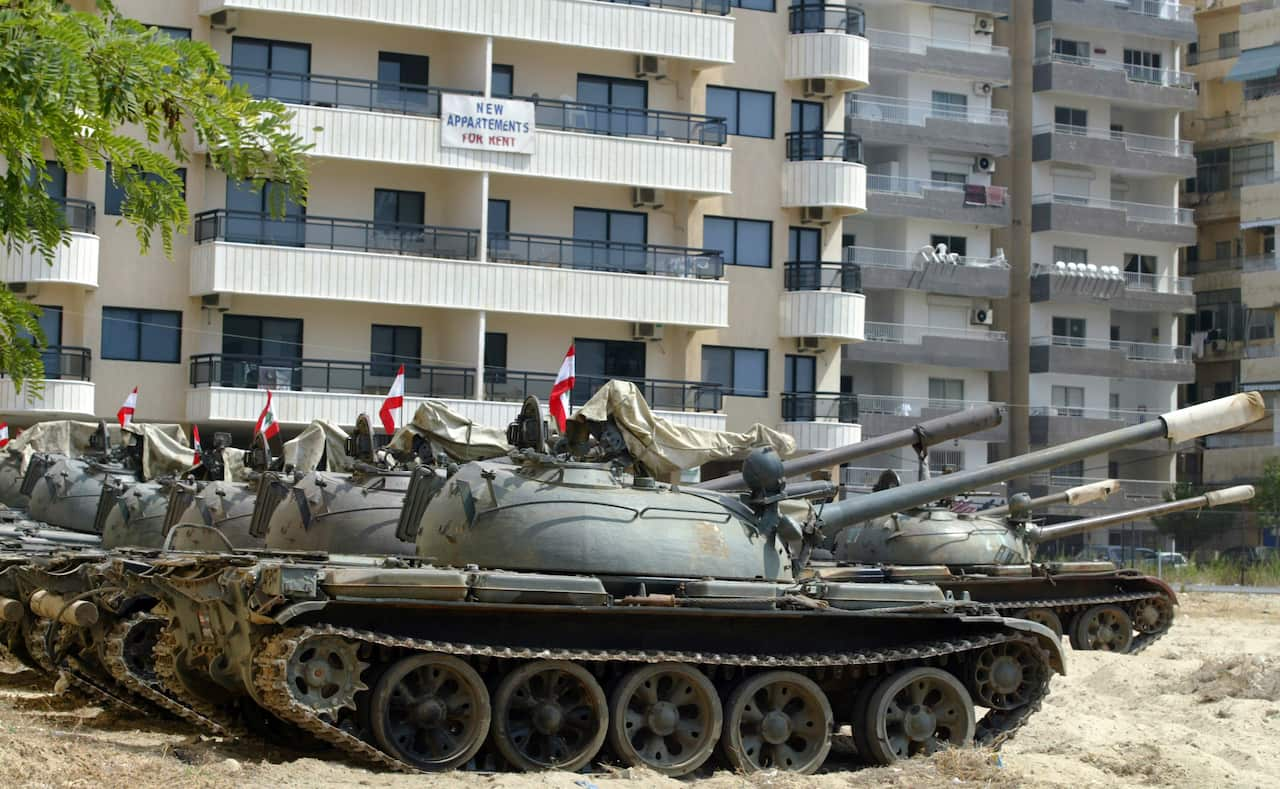The Iran-backed group has used Falaq rockets in attacks on Israeli military sites but says it had “no connection” to the strike on Saturday on a football field that killed 12 children.
This is what is said to be inside the Shiite Muslim movement’s weapons cache.
Wide range of rockets and missiles
Artillery rockets, including Falaq models, “are not accurate” and “have a margin of error of up to three kilometres”, according to Riad Kahwaji, head of the Dubai-based Institute for Near East and Gulf Military Analysis.

Lebanese army Soviet-made T-54 tanks parked in the port city of Tyre, southern Lebanon. Source: AP / Sergey Ponomarev
Military analyst and retired Lebanese army general Khalil Helou said Hezbollah has Iranian ballistic missiles that it has yet to use.
Hezbollah has expanded the size and quality of its arsenal since it last fought an all-out war with Israel in 2006.
Drones used in recent attacks
Hezbollah leader Hassan Nasrallah has said local production contributed to his group’s large drone stockpile.
A fighters’ group of over 100,000
Last month, Nasrallah said the number of fighters his group could count on “greatly exceeded” 100,000, and his group had turned down offers from allies in Syria, Iraq, Yemen and Iran to send combatants.
“Its leaders will be unreachable to Israeli aircraft, as they will be underground.”
